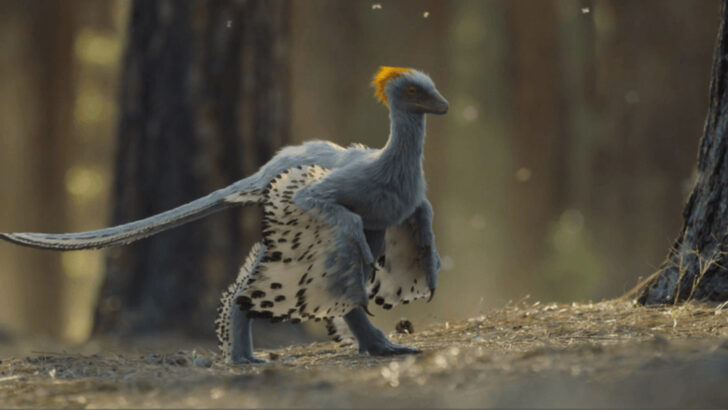Dinosaurs weren’t all giant monsters stomping across prehistoric lands. Some of them were so tiny, you’d swear they were birds in disguise. These pint-sized predators and feathered creatures rewrote what we thought we knew about dinosaurs—proof that size doesn’t always equal danger. Imagine creatures no bigger than a chicken, darting through ancient forests, ruling the skies and underbrush long before birds took flight. They blurred the line between dinosaur and bird, challenging everything about evolution and survival. Get ready to meet seven dinosaurs so small and sneaky, they’ll change your idea of what these ancient beasts really looked like. Prepare to be amazed—because tiny doesn’t mean boring!
Microraptor
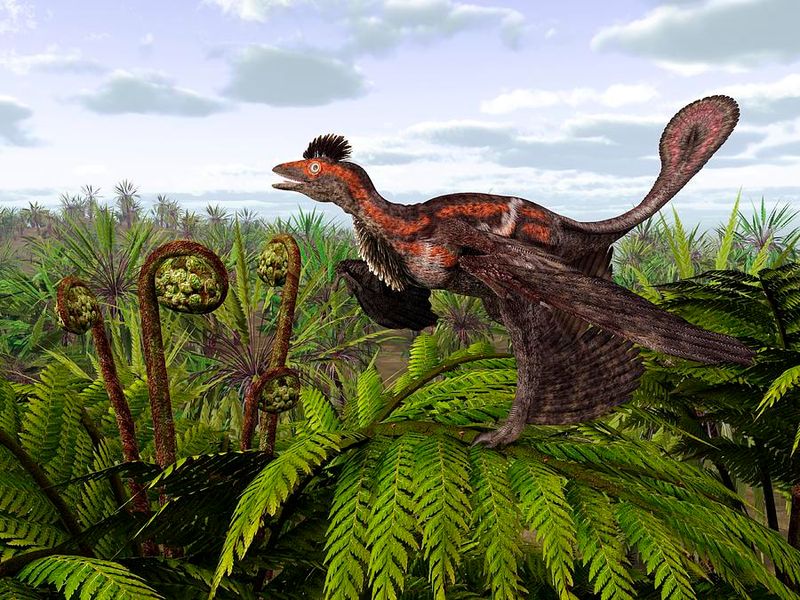
Imagine a creature with four wings—Microraptor was just that! This tiny dinosaur, roughly the size of a crow, lived in the early Cretaceous period. Its feathers were not just for show but played a crucial role in its ability to glide between trees.
Fossils reveal a bird-like appearance, yet Microraptor was a true dinosaur, not an ancestor of modern birds.
This enigmatic species had sharp claws and teeth, indicating a carnivorous diet. Its intriguing ability to glide makes it a unique subject of study for paleontologists, offering insight into the evolution of flight.
Parvicursor
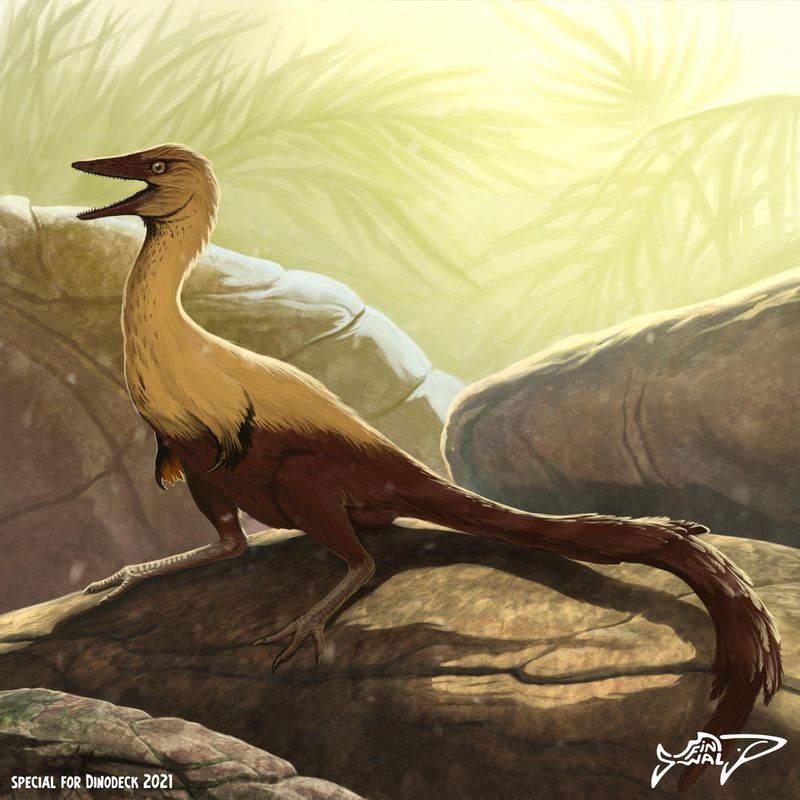
Parvicursor, a name meaning ‘small runner,’ is one of the smallest known dinosaurs, comparable to a pigeon in size. Despite its diminutive stature, it was a fast and agile creature, using its long legs to dart across the arid landscapes of the late Cretaceous.
Its lightweight structure and long, slender fingers suggest it had a specialized diet, possibly feeding on insects or small vertebrates.
Parvicursor’s unique adaptations offer a glimpse into the diverse ecosystems of its time, and its bird-like agility continues to intrigue scientists today.
Epidexipteryx
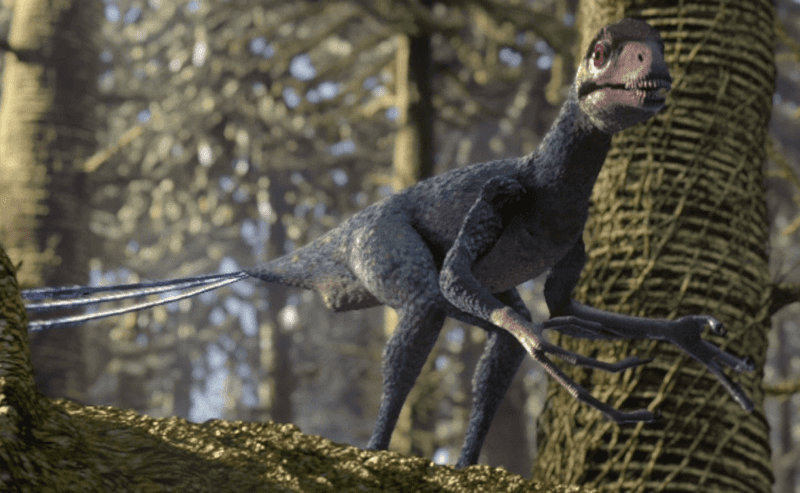
Epidexipteryx stands out with its remarkable tail feathers, not for flight but likely for display. This curious dinosaur lived during the Middle Jurassic period and was about the size of a modern pigeon.
Its teeth suggest a diet that included insects and small animals. The long, ribbon-like tail feathers might have played a role in mating rituals or social interactions.
Though it resembled a bird in some aspects, Epidexipteryx was a true dinosaur, providing valuable insights into feather evolution.
Anchiornis
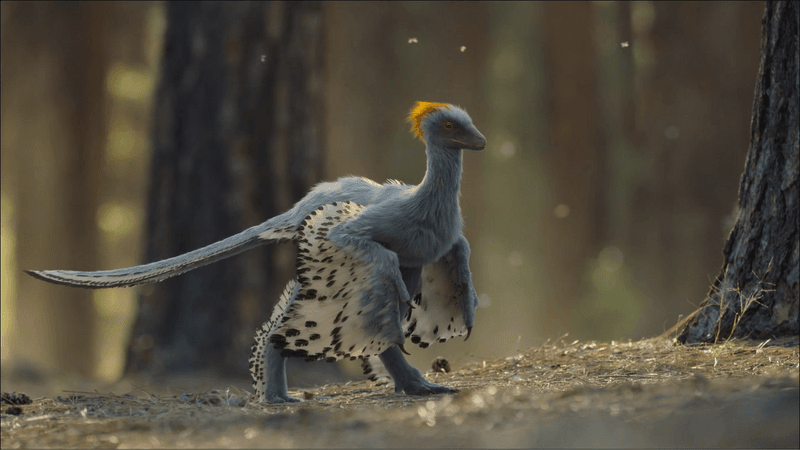
The small, black-and-white plumage of Anchiornis might remind one of a magpie, but this was a dinosaur, not a bird. Living in the late Jurassic period, Anchiornis was roughly the size of a modern crow.
Its feathers were long and showed a complex pattern, suggesting that coloration might have played a role in communication or camouflage.
Anchiornis had a curious mix of dinosaurian and avian features, making it a significant find in understanding the transition from dinosaurs to birds.
Sinosauropteryx
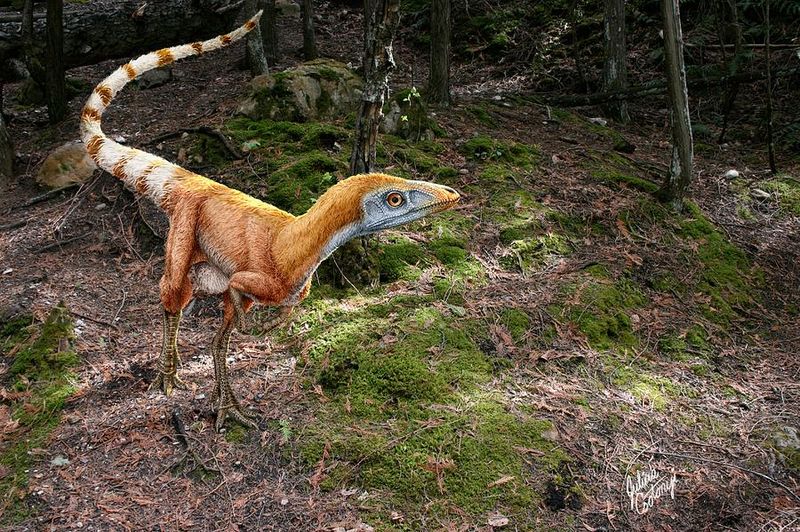
Known for its long, feathered tail, Sinosauropteryx roamed the early Cretaceous period. This dinosaur was about the size of a turkey, and its feathers were among the first discovered in non-avian dinosaurs.
Its preserved remains show a banded tail pattern, potentially used for communication or display. Sinosauropteryx’s discovery challenged the perception of dinosaurs as solely scaly creatures.
These insights into its appearance and behavior continue to provide a window into the diverse world of feathered dinosaurs.
Yi Qi
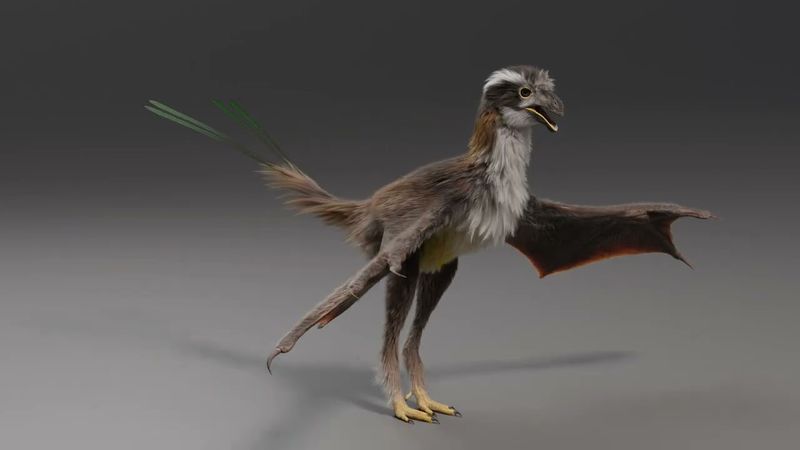
With its bat-like wings, Yi Qi presents a fascinating departure from typical feathered dinosaurs. Living in the late Jurassic period, this crow-sized creature sported membranous wings supported by a unique, elongated bone.
Its wings hint at gliding capabilities, reminiscent of flying squirrels or bats. Yi Qi’s unusual anatomy has sparked debates and interest in dinosaur flight evolution.
This rare combination of features provides a unique perspective on the experimentation of nature during the age of dinosaurs.
Mei Long
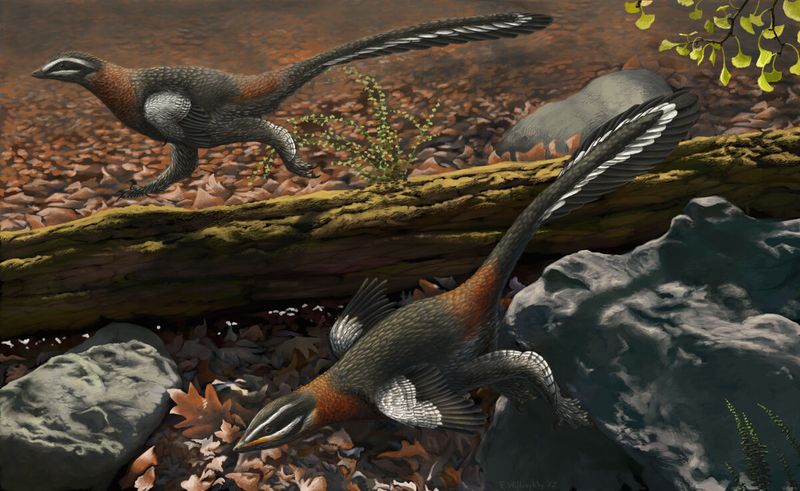
Mei Long, meaning ‘soundly sleeping dragon,’ was discovered in a fossilized slumber. This small dinosaur, no bigger than a duck, lived during the early Cretaceous period.
Its curled-up pose suggests a resting or sleeping position, providing rare insight into dinosaur behavior. Mei Long’s feathers hint at insulation rather than flight.
The discovery of its peaceful pose has made it a symbol of tranquility in prehistoric life, offering a glimpse into daily dinosaur existence.

